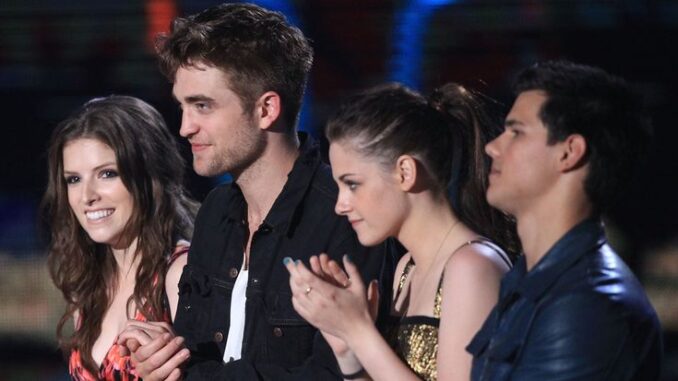
When the Sun Refuses to Set: Animation and Edward’s Perspective Illuminate “Twilight” in a New Dawn
The Twilight saga, for better or worse, left an indelible mark on the cultural landscape. Its gothic romance, coupled with supernatural elements, captivated a generation, spawning countless imitations and sparking fierce debate. Now, years after the books and films faded from the immediate spotlight, they are poised for a resurgence in a new and unexpected form: an animated series based on “Midnight Sun,” told from Edward Cullen’s perspective, set to premiere on Netflix. This animated adaptation represents more than just a rehash of familiar territory; it’s a fascinating exploration of storytelling, perspective, and the enduring appeal of a love story wrapped in the cloak of the fantastical.
The very concept of animating “Midnight Sun” is intriguing. The live-action films, while commercially successful, were often criticized for their stilted performances and at times, unintentionally comedic execution. Animation offers a unique opportunity to transcend these limitations. It can capture the heightened emotions and fantastical elements of the story with a visual flair and expressive freedom that live-action struggles to achieve. Imagine the shimmering skin of vampires rendered with intricate detail, the ethereal beauty of the Olympic Peninsula brought to life with vibrant colors, and the sheer intensity of Edward’s internal struggles visualized through symbolic imagery. Animation allows for a more stylized and emotionally resonant portrayal, potentially redeeming the saga for those who found the films lacking in nuance.
But the real allure lies in the narrative shift. “Midnight Sun,” as a companion novel to “Twilight,” offers a crucial perspective: Edward’s. In the original books, we experience the world through Bella Swan’s eyes, a somewhat passive observer thrust into the supernatural realm. Edward, shrouded in mystery and brooding intensity, remains a fascinating, yet ultimately unknowable figure. “Midnight Sun” peels back the layers of this enigmatic vampire, revealing his inner turmoil, his centuries of loneliness, and the desperate conflict between his instincts and his love for Bella.
This exploration of Edward’s perspective is vital to understanding the core of the story. We see the world through the eyes of someone who has lived for over a century, burdened by the knowledge of his predatory nature and the constant struggle to control his impulses. We witness his internal battles as he grapples with the implications of his feelings for Bella, knowing that their relationship could jeopardize everything he holds dear. This internal conflict, previously hinted at through brooding glances and cryptic pronouncements, is now laid bare, offering a deeper and more complex understanding of his character.
Furthermore, animating “Midnight Sun” allows for a richer exploration of the world-building aspects of the Twilight universe. Edward, being a vampire with extraordinary abilities, possesses heightened senses and a vast knowledge accumulated over centuries. An animated series can visually represent these abilities and knowledge, allowing viewers to experience the world as Edward does. We can witness his enhanced senses as he perceives the subtle scents and sounds that escape human awareness, and we can delve into the historical context of his experiences, providing a richer understanding of the vampire world and its intricate rules.
However, the success of this animated adaptation hinges on its ability to address the inherent challenges of the source material. The “Twilight” saga, despite its popularity, has been criticized for its problematic portrayal of relationships and its reliance on outdated gender stereotypes. An animated adaptation has the opportunity to reframe these elements, offering a more nuanced and progressive interpretation of the characters and their relationships. It can explore the complexities of consent, challenge traditional gender roles, and offer a more thoughtful exploration of the themes of love, identity, and belonging.
Ultimately, the animated adaptation of “Midnight Sun” on Netflix represents a fascinating experiment in storytelling. It offers a chance to revisit a beloved, albeit flawed, series with a fresh perspective, enhanced visuals, and the potential for a more nuanced and sophisticated exploration of the characters and their world. Whether it succeeds in redeeming the Twilight saga for its critics or simply reignites the passion of its existing fanbase remains to be seen. But one thing is certain: the return of Edward Cullen’s perspective to the screen, this time illuminated by the glow of animation, promises a captivating and potentially transformative journey into the heart of the Twilight universe. The sun might never set on the enduring appeal of this supernatural romance, and with animation, its light might shine even brighter.
